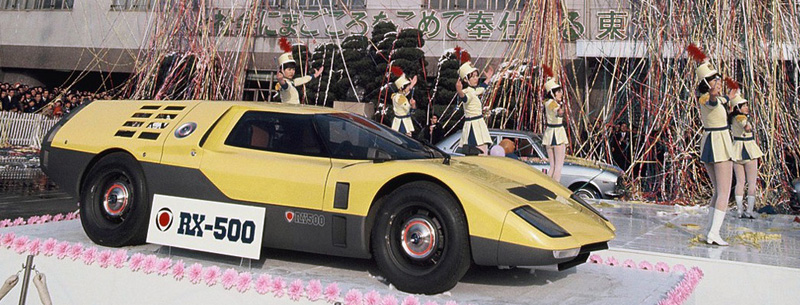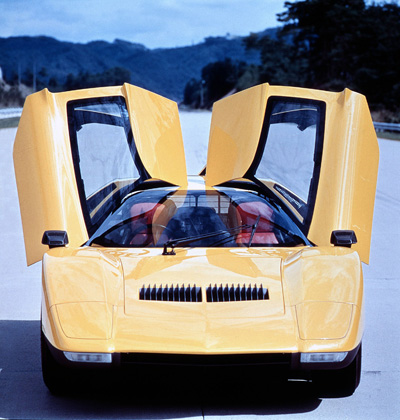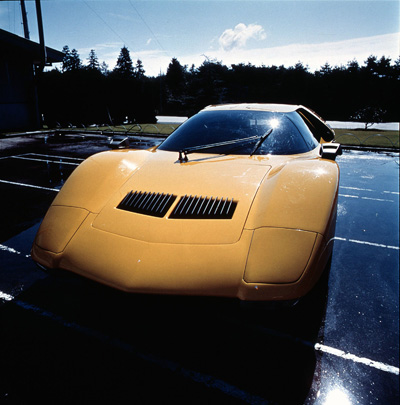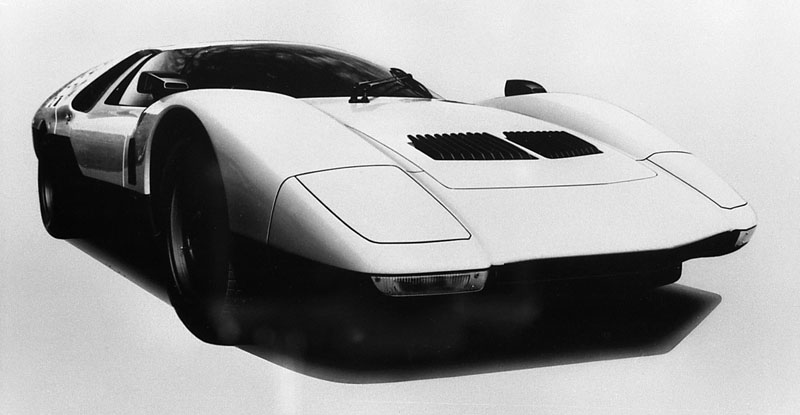Mazda RX500 Rotary Piston Engine Prototype 1970
Mazda was one of the various companies that applied for a license of the Wankel rotary piston engine. Mazda's rotary engine development history began in 1961. Emerging from the confusion of the postwar period, Japan's automotive industry was starting to expand. There were clear signs that competition was intensifying amongst car makers, and the pace of the industry’s reorganization and capital tie-ups increased rapidly. Within this environment, a late starter such as Mazda faced tough decisions as to how best to display its distinctive character if it were to maintain its independence. So, early discussions within the industry as to the potential of the rotary engine as dream technology for the future presented a golden opportunity. Tsuneji Matsuda, then president of Toyo Kogyo (which became Mazda), paid a personal visit to the headquarters of NSU Motorenwerke AG in West Germany, developer of the Wankel engine, where he signed a technical cooperation contract.
Effectively gambling Mazda's corporate identity on one major engineering challenge, Matsuda-san's aim was to widely commercialise an unknown new technology, the mass-production of rotary-engined vehicles simultaneously establishing the company's global credentials as a unique, independent car maker boasting the very highest levels of technological prowess. However, the reality of rotary engine development was to prove extremely demanding. The team of 47 engineers in Mazda’s rotary engine research department faced innumerable challenges of considerable complexity; not least of which was the elimination of the chatter marks -also known as 'the devil’s nail marks'- etched on the inside walls of the rotor housing as the result of friction caused by the rotor turning at high speed.
In October 1970 Mazda unveiled the radically angular and streamlined RX500 concept car at the 17th Tokyo Motor Show. The start of the new decade also marked the company's 50th Anniversary and the RX500 was a bold statement of Mazda’s engineering and design ambition. It quickly became a crowd favourite, captivating the public with its futuristic design and technology.
The development of a prototype designed to research the behaviour of plastic vehicle bodies and driving dynamics at speeds of over 125mph had been initiated as early as 1968 under the codename X810. The idea was to investigate the harmony between people and speed in a future society, based on possible future intercity traffic scenarios. An experimental vehicle was required – one with a mid-engine, low air resistance and high downforce and, at the same time, the smoothness of a rotary engine. The RX500 was also considered as a potential successor to the Cosmo Sport 110 S, Mazda's flagship car at the time. A carefully selected team produced various models and studied their aerodynamic drag in the wind tunnel. Contrary to the original plan of building a coupe, designer Shigenori Fukuda's streamlined Shooting Brake model, which offered the lowest aerodynamic drag, was chosen. Fukuda-san drew inspiration for the RX500's design from the film ‘2001: A Space Odyssey’, among other things. The vehicle was to resemble a classic car as little as possible, so a wide variety of design elements from racing and aviation found their way into the RX500. The rear stands out in particular, with its unusual appearance, evoking a mix between a spaceship and a jet fighter. Inspiration also came from Fukuda's association with Italian car body manufacturer Carrozzeria Bertone. Thus, Fukuda-san added soft curves and contours to the RX500 to avoid creating monotonous lines.
Another distinctive design feature is the wrap-around windscreen. With the A-pillar fully concealed, the vehicle's glass surfaces appear to be cast in one piece, giving the cabin a dome-like appearance. Entry to the RX500 is gained through a pair of butterfly doors. Even when stationary, the door concept, familiar from motorsport, creates a dynamic impression. Behind these front doors, a pair of gullwing doors, which serve as a longitudinally split cover for the engine compartment, house the spinning heart of the supercar. Inside the car, passengers sit in two bucket seats. The eye is drawn to the three semi-circular instruments behind the four-spoke leather steering wheel, which are arranged in a wrap-around dashboard. Entertainment is also provided for in the RX500: The centre console houses an AM/FM radio behind the four-speed transmission taken from the Mazda Luce R130 coupé. The RX500 was equipped with a futuristic tail light concept intended to provide additional information to other road users, thereby making traffic safer. For example, the lighting system at the rear of the vehicle included red, yellow and green lights in addition to the standard red brake and white reversing lights. Depending on the braking intensity, the red lights would light up progressively to warn following traffic in the event of emergency braking, similar to today's emergency braking signal with flashing tail lights. The yellow lights come on as soon as speed is reduced, while the green lights indicate that the vehicle is accelerating.
It was also the RX500’s rotary engine that cemented its supercar concept status. Powered by an upgraded two-rotor 10A engine located centrally for perfect weight distribution, the tiny 982cc rotary produced 250ps and revved to 15,000rpm – higher than the grand prix cars of the period. With a fibreglass-reinforced plastic body on a tube frame, the RX500 weighs just 850kg resulting in a power-to-weight ratio of 3.4kg per horsepower. It was also just 1.065 metres tall as well – light, fast, low and futuristic . A dip into the Mazda archive reveals pictures of the car in different colours, which caused speculation that several versions of the RX500 been built. In fact just one RX500 was built, originally green it was repainted yellow for the Tokyo Show, as all Mazda vehicles on display that year were presented in the same bright yellow with red interiors. After the Tokyo show, the RX500 continued to make a splash at various shows around the world and was painted silver and a restoration in 2008 revealed traces of the previous green and yellow colours underneath. Today the sole Mazda RX500 can be seen at the Numaji Transportation Museum in Hiroshima in metallic grey finish. This prototype was exhibited at 2013 Goodwood Festival of Speed. Source Mazda Media Archives
Wallpapers Mazda RX500 Rotary Piston Engine Prototype 1970 (click on image to enlarge)
|
||||||||||||||||||||||||||
|---|---|---|---|---|---|---|---|---|---|---|---|---|---|---|---|---|---|---|---|---|---|---|---|---|---|---|
|
|||||||||||||||||||||||||||||











.jpg)

.JPG)
.JPG)






.jpg)


.jpg)





